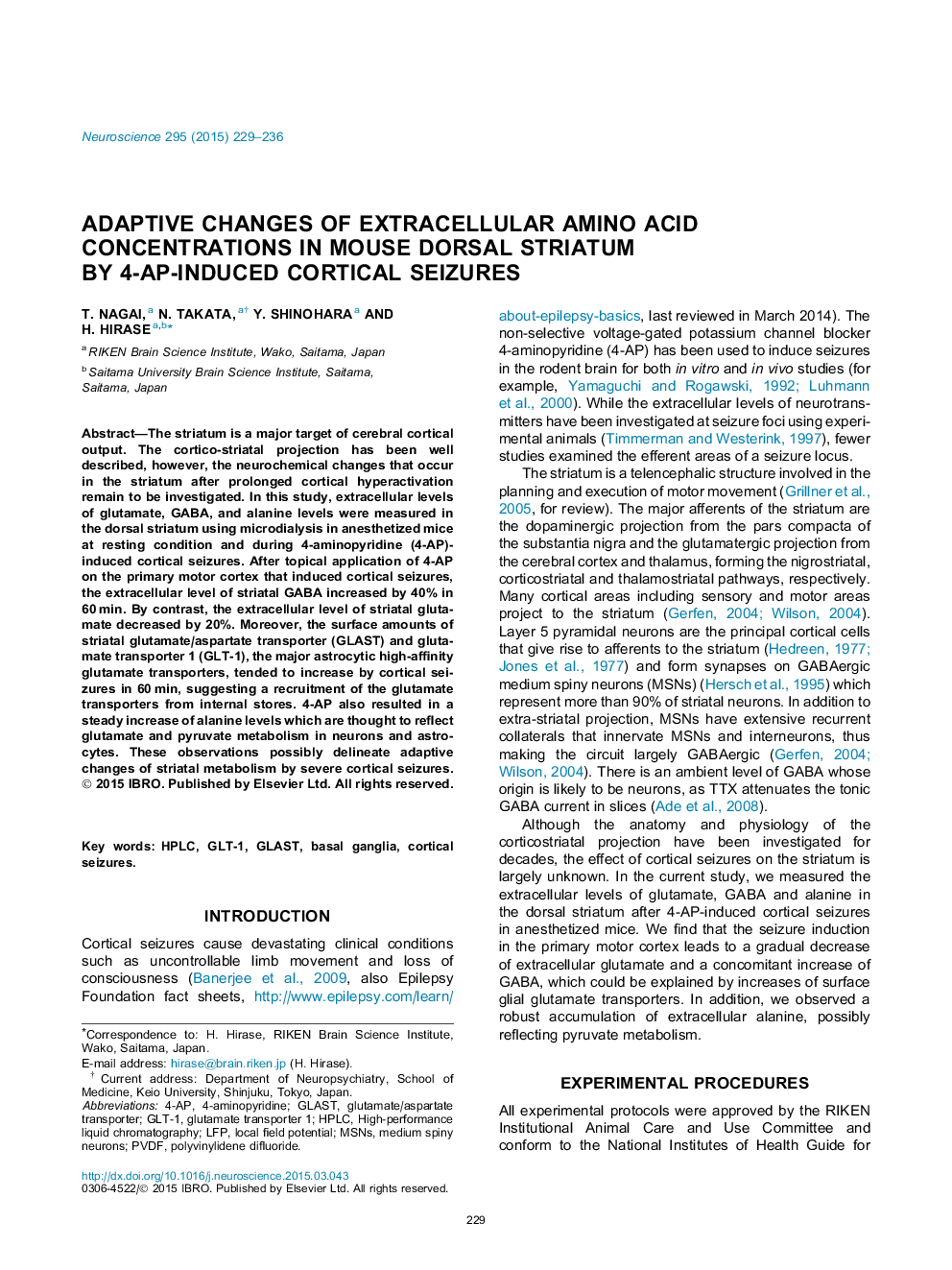| Article ID | Journal | Published Year | Pages | File Type |
|---|---|---|---|---|
| 6272481 | Neuroscience | 2015 | 8 Pages |
â¢Striatal extracellular amino acid levels are investigated in response to cortical seizures.â¢The GABA and alanine levels were increased while the glutamate level was decreased.â¢Striatal surface GLAST and GLT-1 increased after 60 min of cortical seizures.
The striatum is a major target of cerebral cortical output. The cortico-striatal projection has been well described, however, the neurochemical changes that occur in the striatum after prolonged cortical hyperactivation remain to be investigated. In this study, extracellular levels of glutamate, GABA, and alanine levels were measured in the dorsal striatum using microdialysis in anesthetized mice at resting condition and during 4-aminopyridine (4-AP)-induced cortical seizures. After topical application of 4-AP on the primary motor cortex that induced cortical seizures, the extracellular level of striatal GABA increased by 40% in 60Â min. By contrast, the extracellular level of striatal glutamate decreased by 20%. Moreover, the surface amounts of striatal glutamate/aspartate transporter (GLAST) and glutamate transporter 1 (GLT-1), the major astrocytic high-affinity glutamate transporters, tended to increase by cortical seizures in 60Â min, suggesting a recruitment of the glutamate transporters from internal stores. 4-AP also resulted in a steady increase of alanine levels which are thought to reflect glutamate and pyruvate metabolism in neurons and astrocytes. These observations possibly delineate adaptive changes of striatal metabolism by severe cortical seizures.
